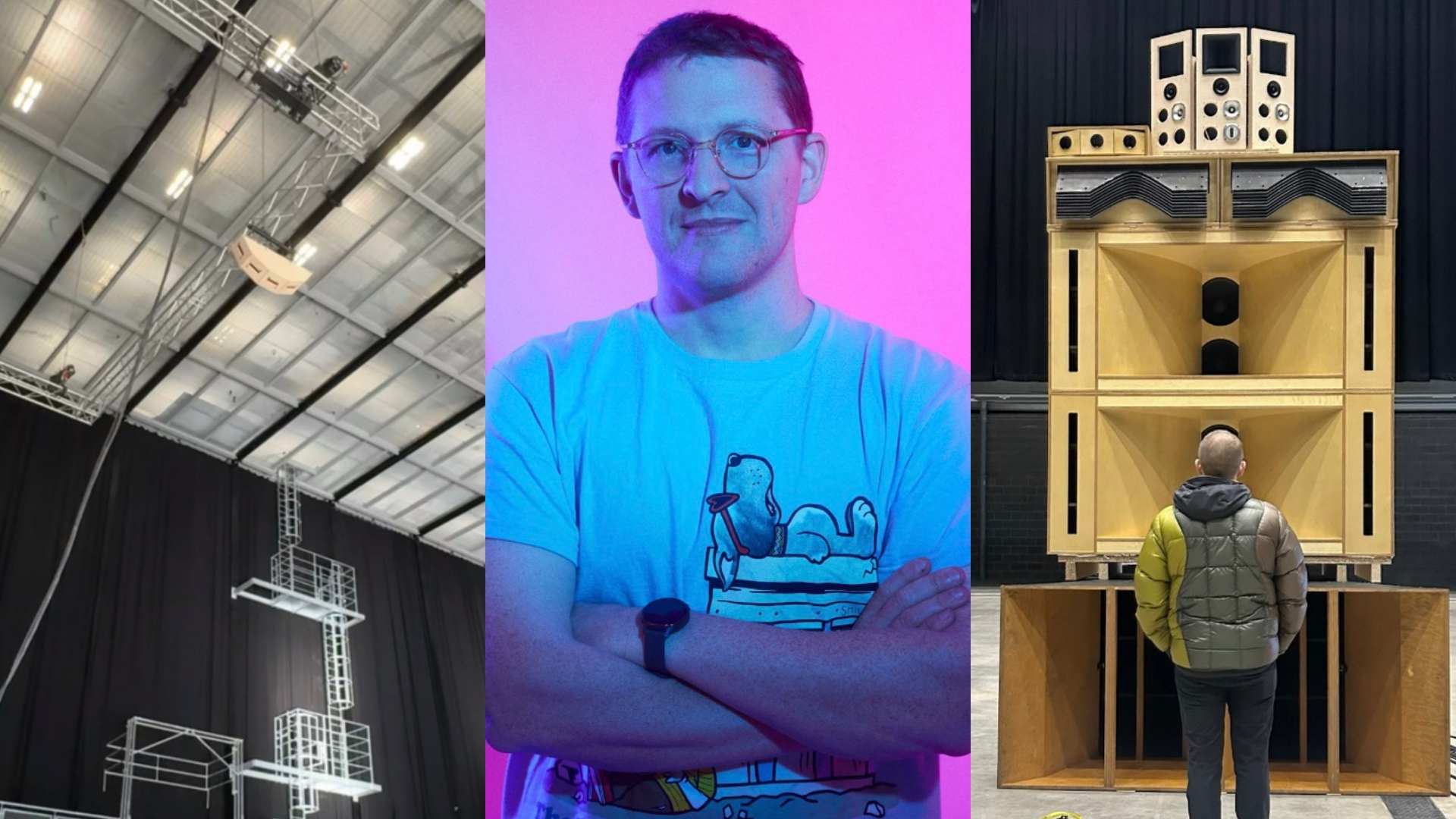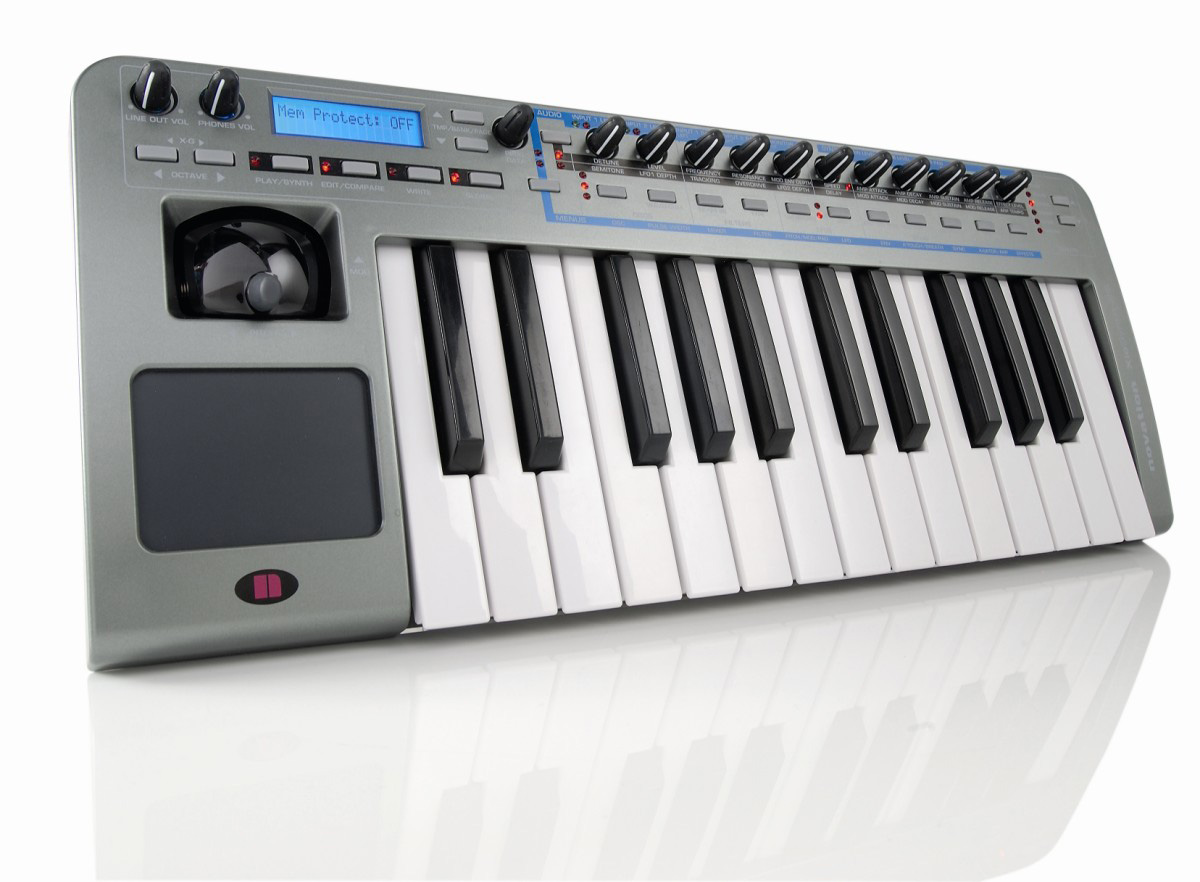MusicRadar Verdict
The XioSynth is a tidy little solution for anyone who wants bags of functionality in a compact chassis. You might well grow to love it.
Pros
- +
Improved synth sounds great. Good value. X-Gator is cool. + Hybrid mode is useful
Cons
- -
Slightly suspect build quality. Only 16 MIDI template memories. XY controller requires too much pressure. You can only use one
MusicRadar's got your back
Sometimes, the best things in life really do come in small packages. The compact and capable Novation X-Station 25 was a case in point - it combined a controller keyboard, a synth, an audio interface, a multi-effects unit and a control surface in one portable unit.
Novation´s latest, the XioSynth 25, is probably best though of as a cousin to the X-Station. However, being both smaller and cheaper, the issue now is whether it´s just a watered-down version of its sibling or something genuinely (and usefully) different.
Controls
Physically, the XioSynth 25 is somewhat reminiscent of the original Bass Station and even more similar to the recently released ReMOTE LE. The two-octave, touch-sensitive keyboard can be moved up and down in pitch one octave at a time (a 49-note version is also available), and the 11 control knobs and buttons can be switched to perform a number of different roles via buttons on the front panel.
The XioSynth is quick and easy to set up and can be powered via USB, with a PSU, or from good old AA batteries. It´s generally quite simple to use, though some aspects of its operation aren´t immediately obvious. Fortunately, the bundled DVD contains a number of informative tutorial videos that explain everything in hands-on style.
Functionality
It does indeed turn out to be the case that the XioSynth lacks some of the X-Station´s functionality. Fewer controls are immediately available, the keyboard lacks aftertouch and there´s only one microphone level input (2-in/2-out audio I/O is provided, and there´s one XLR input with phantom power). Surprisingly, though, Novation have actually managed to squeeze in some extra features that you won´t find on the X-Station. The built-in synth has an improved filter and an extra Shape parameter, for example, and these significantly expand its sonic versatility.
The KS synth engine used here has been around for a while now, so full marks to Novation for bothering to improve it. It should also be noted that the XioSynth can load presets from all K-class synths (A/K/V/X-Station, KS4/5/R), so its users have a huge patch library to draw on. One thing you can´t do, however, is load XioSynth-created patches into the software V-Station.
While the X-Station can be used either in synth mode or controller mode, the XioSynth can work in both simultaneously via its Hybrid mode. So, you could trigger the built-in synth with your sequencer while using the control surface and keyboard to play and automate a soft synth. On the downside, there´s only space for 16 controller templates in the XioSynth´s memory, as opposed to the rather more useful 40 on the X-Station.
Another limitation that you won´t find on the X-Station is that the built-in effects can´t be applied to incoming audio. However, this restriction aside, the internal audio routing is actually more flexible with the XioSynth. Our favourite new feature has to be the X-Gator, which can be used to add trance-style gating effects to any synth patch. Furthermore, gating patterns can also be programmed visually on the LCD screen.
By default, the XioSynth´s front panel knobs are used in ‘pickup mode´. This means that the knob must be turned to match the current value (displayed on the screen) before the value can be changed. Although slightly counter-intuitive at first, this system actually becomes really useful when you start to switch the 11 knobs between their two roles, as it prevents their values from immediately jumping as soon as the control is touched.
Compromises
Unfortunately, several compromises have been made with the design of the XioSynth´s front panel. The multi-purpose rotary encoder is situated to the right-hand side of the LCD screen (both of which are towards the left-hand side of the panel), so unless you use your right hand, the screen is obscured when you make adjustments. This is particularly frustrating when the knobs are working in the aforementioned pickup mode, where a clear view of the display is essential. Another slight drawback is the lack of any transport buttons.
More seriously, the build quality seems a tad suspect. In fact, the headphone knob on our XioSynth literally came off in our hands within just minutes of us taking the new unit out of the box!
Finally, we have to report that the XioSynth shares one of the X-Station´s major annoyances - the XY pad requires quite a bit of finger pressure, making smooth movements more difficult than you might expect.
Fortunately, none of these issues is particularly bothersome, and we actually grew to like the XioSynth a great deal. The new Hybrid mode makes the built-in synth far more useful than the X-Station´s, especially to those who normally use soft synths exclusively.
We think the XioSynth will appeal most to those who are looking for a secondary compact and affordable controller keyboard, audio interface and synth for use in a mobile setup. First-time synth buyers, however, would probably be better off going for the X-Station - this provides direct access to more simultaneous controls and shallows the learning curve associated with synth programming as a consequence. The XioSynth packs a lot in for the money, though, and certainly adds up to more than the sum of its individual parts. If it wasn´t for the questionable build quality, we´d have scored it a point higher.
MusicRadar is the number 1 website for music makers of all kinds, be they guitarists, drummers, keyboard players, djs or producers...
GEAR: We help musicians find the best gear with top-ranking gear round-ups and high- quality, authoritative reviews by a wide team of highly experienced experts.
TIPS: We also provide tuition, from bite-sized tips to advanced work-outs and guidance from recognised musicians and stars.
STARS: We talk to musicians and stars about their creative processes, and the nuts and bolts of their gear and technique. We give fans an insight into the actual craft of music making that no other music website can.

“Almost a lifetime ago, a few Burnage lads got together and created something special. Something that time can’t out date”: Original Oasis drummer Tony McCarroll pens a wistful message out to his old bandmates

“A high-quality solution for capturing your drums”: Sennheiser MD 421 Kompakt review

“I need to build a sound of my own that has the power that I want”: Floating Points hates festival sound systems so much that he’s invented his own










